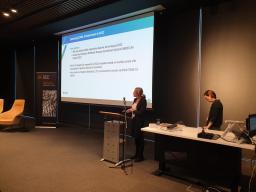
On Friday 6 October 2023, a significant symposium was organised by the ANU School of Demography to delve into the demographic impact of the COVID-19 pandemic with a focus on understanding the lasting lessons and short-lived consequences of the virus.
The primary objective of this event was not only to highlight COVID-19's demographic changes but also to collaboratively reflect on the implications for future pandemic preparedness. The underlying sentiment was clear: the question isn't if another pandemic will occur, but when.
After a thought-provoking 'Welcome to Country' by Ms. Selina Walker, the ANU College of Arts and Social Sciences Dean, Professor Bronwyn Parry, introduced the Honourable Dr. Andrew Leigh MP, who delivered the inaugural address. His focus was on the shifts in mortality, fertility, and migration that Australia witnessed over the pandemic's three-year course.
Distinguished academics from renowned universities and representatives from the Australian Institute of Health and Welfare (AIHW), the Australian Bureau of Statistics (ABS), the Australian Institute of Family Studies (AIFS), and the Treasury held insightful sessions on various demographic aspects. The symposium was enriched by contributions from experts including Tim Adair, Michelle Gourley, Anna Reynolds, Edith Gray, Jennifer Baxter, Qing Guan, Ray Harris, Beidar Cho, Trish Chester, and James O’Donnell.
"What comes next?" The aftermath of the pandemic raises critical uncertainties, particularly regarding its prolonged influence on both men's and women's reproductive health and migration patterns. Unquestionably, the most severe impact is the loss of lives, but ramifications such as school closures and missed educational opportunities for children, especially those from disadvantaged backgrounds, cannot be underestimated. Future discussions and research will inevitably factor in experiences from the times before, during, and after COVID-19, addressing various demographic aspects of the "pandemic cohorts". A comprehensive understanding of these cohorts will only emerge from extended observations over time.








